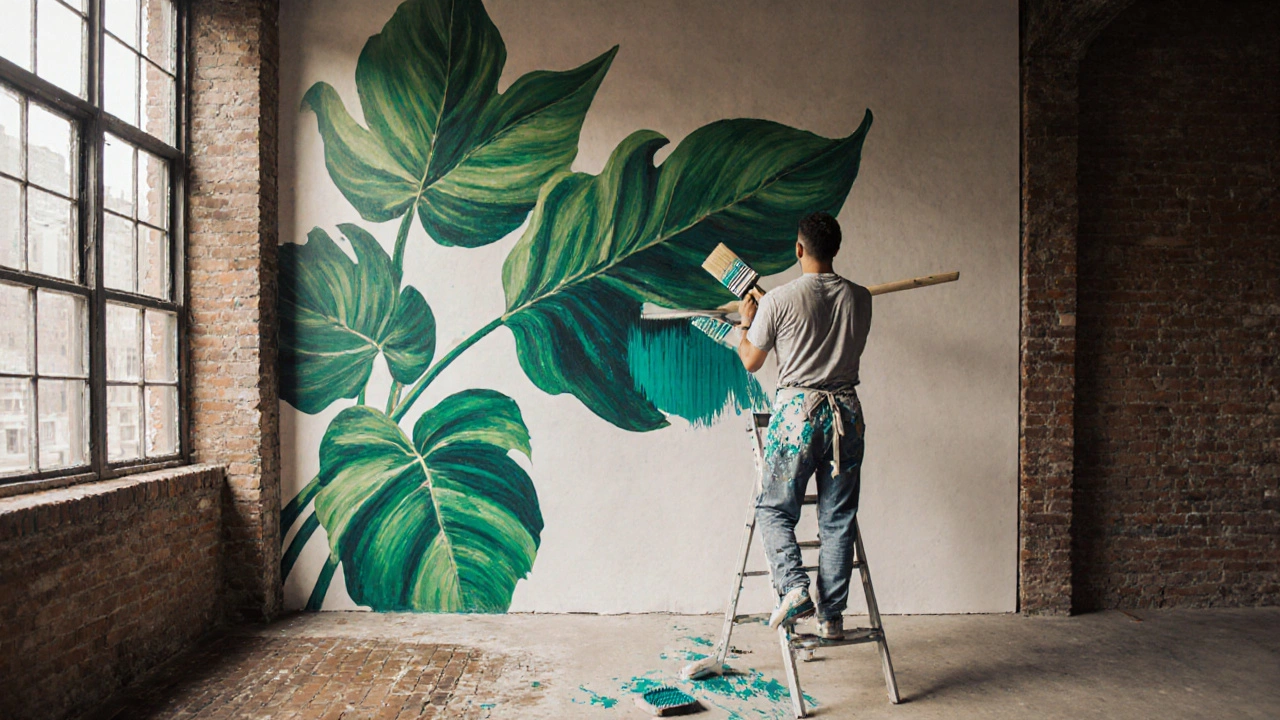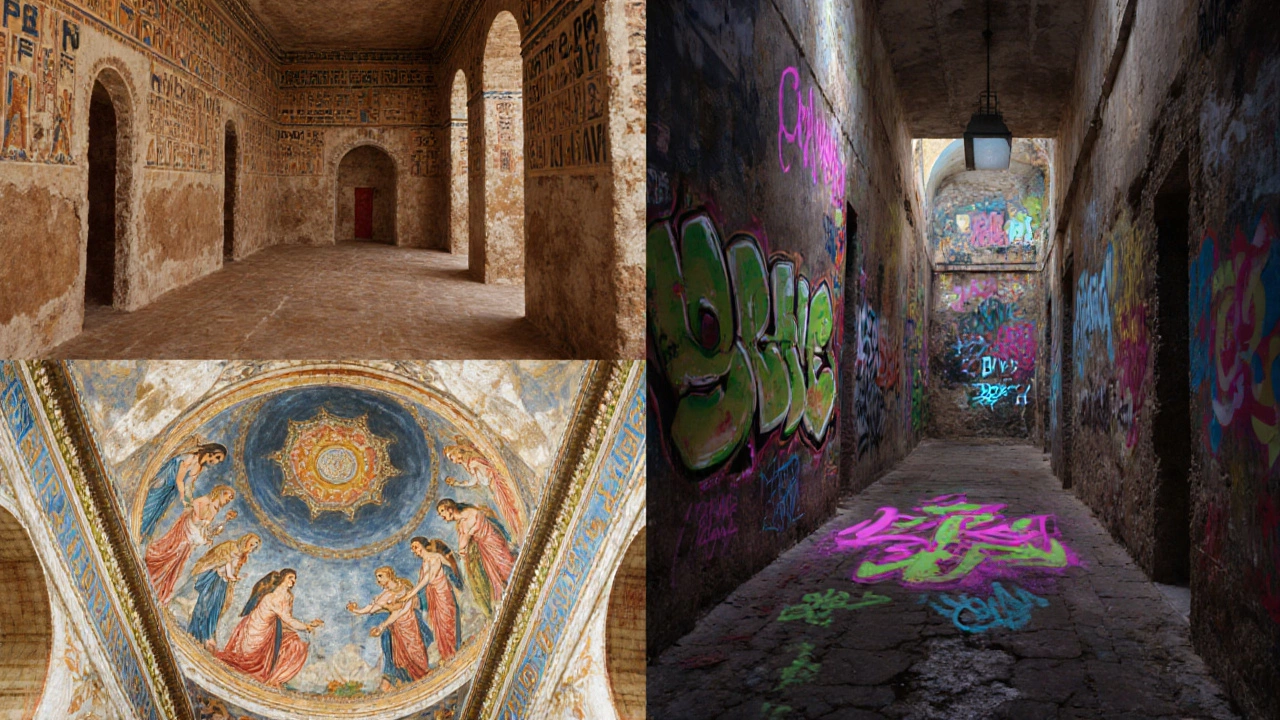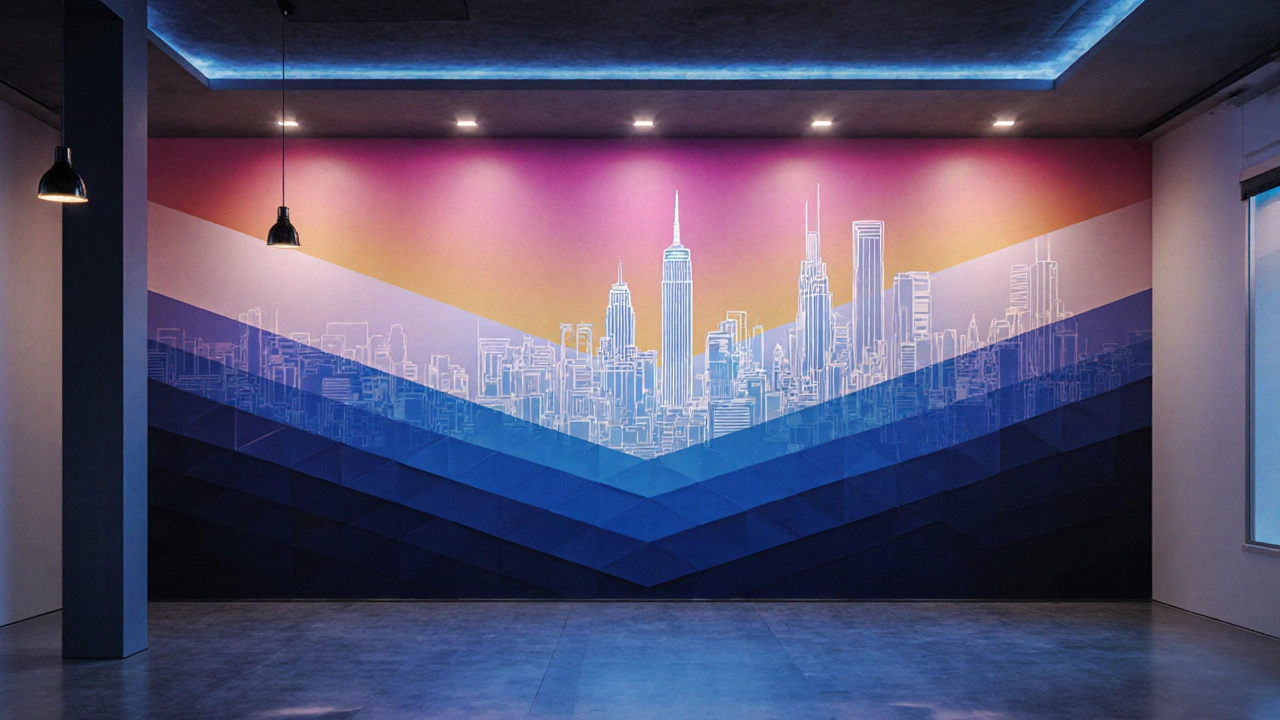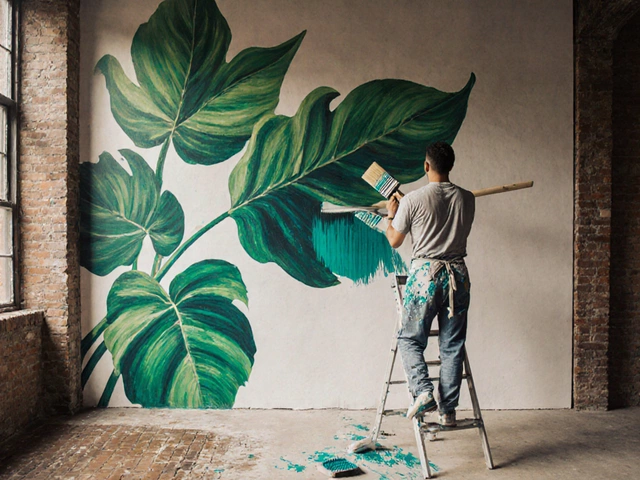What Is Painting on a Wall Called? Understanding Wall Murals and Related Art Forms

Mural Cost Estimator
Estimate Your Mural Project Costs
Enter your project details to get a professional cost estimate
Enter wall dimensions and select style to see your estimate
Wall mural is a large‑scale artwork painted directly onto a wall, often covering an entire room or a prominent section of a building. Unlike a framed canvas that hangs on a wall, a mural becomes part of the wall itself, turning ordinary surfaces into visual statements.
What Exactly Is a Wall Mural?
A wall mural can be decorative, narrative, or abstract, and it may be created with a variety of paints-acrylic, oil, or even specialty coatings. The key characteristic is its size: murals usually span several feet, making them a focal point in homes, offices, or public spaces.
Brief History of Wall Paintings
Humans have been painting walls for millennia. Ancient Egyptians used mineral pigments to decorate tombs, while the Romans mastered fresco a technique where pigment is applied to wet plaster, allowing the color to become part of the wall surface. The Renaissance saw grand ceiling frescoes in churches, and the 20th century introduced graffiti stylized lettering and images sprayed onto public walls, often as a form of street expression. Today, wall mural design blends historic methods with modern materials and digital printing.
Key Techniques and Materials
- Acrylic paint: Fast‑drying, low odor, and excellent for indoor murals. It adheres well to primed drywall.
- Oil paint: Offers rich, deep colors but takes longer to dry; best for artists comfortable with slower workflows.
- Trompe‑l'œil a realistic painting technique that creates the illusion of three‑dimensional objects on a flat surface: Used to make a wall appear as if it contains windows, shelves, or other architectural features.
- Digital printing: Large‑format printers can transfer high‑resolution images onto canvas or directly onto wall‑ready panels.
Different Types of Wall Paintings
| Style | Typical Location | Materials Used | Longevity | Typical Cost Range (USD) |
|---|---|---|---|---|
| Wall mural | Homes, offices, restaurants | Acrylic or oil paint on prepared drywall | 5-15 years (depends on sealant) | 1,000-5,000 |
| Fresco | Historical buildings, museums | Pigment mixed with water on wet plaster | 50+ years (integrates with plaster) | 2,000-10,000 |
| Graffiti/Street art | Exterior walls, urban spaces | Spray paint, markers | 2-10 years (weather dependent) | 500-3,000 |
| Trompe‑l'œil | Interior décor, boutique shops | Oil or acrylic with high‑detail brushes | 8-20 years (sealed) | 1,500-6,000 |

Planning Your Own Wall Mural
Before you pick a paintbrush, ask yourself a few practical questions:
- What mood do you want the space to convey? Warm colors energize, cool tones calm.
- How much wall space is available? Measure width and height, then calculate the total square footage.
- Will the mural be permanent or temporary? If you might repaint later, use a removable primer.
- Do you have the skill set? Simple geometric patterns are beginner‑friendly; realistic scenes need advanced shading.
Once you have answers, draft a sketch on paper or use a digital mock‑up. Many designers employ software like Adobe Photoshop or free tools such as GIMP to visualize the final look.
DIY vs. Hiring a Professional
Doing it yourself can save money and give you creative control. A DIY approach works well for small rooms or simple designs. However, professional muralists bring expertise in surface preparation, large‑scale composition, and durability.
Consider hiring a pro if:
- The mural covers an entire wall (over 200 sq ft).
- You want a complex scene with perspective.
- You need a quick turnaround for a commercial space.
Pro quotes often include prep work, priming, paint, and a finish coat, which protects the artwork from humidity and UV light.
Maintenance Tips to Keep Your Mural Fresh
Even the toughest acrylics can fade if exposed to direct sunlight. Follow these steps to extend life:
- Apply a clear matte sealer once the paint is fully cured (usually 24‑48 hours).
- Dust the surface with a soft cloth weekly; avoid abrasive cleaners.
- Touch up small scratches with the original paint color.
- Control humidity; dehumidifiers help in damp climates.

Cost Considerations
Budgeting for a wall mural involves material, labor, and optional extras. Acrylic paint typically costs $30-$60 per gallon, while a professional artist may charge $10-$25 per square foot. If you opt for digital print panels, factor in printing and installation fees.
To keep costs down, you can:
- Prepare the wall yourself (clean, sand, prime).
- Choose a limited color palette.
- Use stencils for repetitive patterns.
Popular Themes for Modern Wall Murals
From nature scenes to abstract geometry, here are a few trends that homeowners love in 2025:
- Botanical walls: Large leaves or floral vines bring a fresh outdoor feel inside.
- Geometric gradients: Soft color fades combined with sharp angles create depth.
- City skylines: Silhouettes of famous landmarks add a personal travel story.
- Custom family portraits rendered in a mural style: A unique heirloom.
Frequently Asked Questions
Can I paint a mural on textured walls?
Yes, but you’ll need to smooth the surface first. Use a joint compound to fill grooves, sand it flat, and then prime. Textured walls can cause paint to pool and look uneven.
What’s the difference between a fresco and a wall mural?
A fresco is painted on wet plaster, letting pigments bond chemically with the wall, which makes it last centuries. A wall mural generally uses dry surfaces and acrylic or oil paints, so it’s less permanent but easier to update.
How long does a professional mural take?
Timing varies with size and complexity. A 10 × 12 ft simple design may take 2-3 days, while a detailed scene covering an entire room can stretch to 2 weeks, including prep and finishing coats.
Is graffiti considered a form of wall mural?
Graffiti shares the large‑scale, wall‑bound nature of murals, but it’s typically unsanctioned and uses spray paint. In the art world, both fall under the umbrella of wall painting, yet they differ in context and technique.
Can I remove a wall mural without damaging the wall?
If a removable primer was used, a heat gun or gentle scraping can lift the paint. Otherwise, you’ll need to sand or repaint the wall, which may affect the underlying texture.
Whether you choose a lush botanical scene or a modern geometric pattern, a well‑executed wall mural can transform a room from plain to spectacular. With the right planning, materials, and either DIY enthusiasm or professional help, you’ll end up with a piece of art that tells your story on the very walls you live in.
